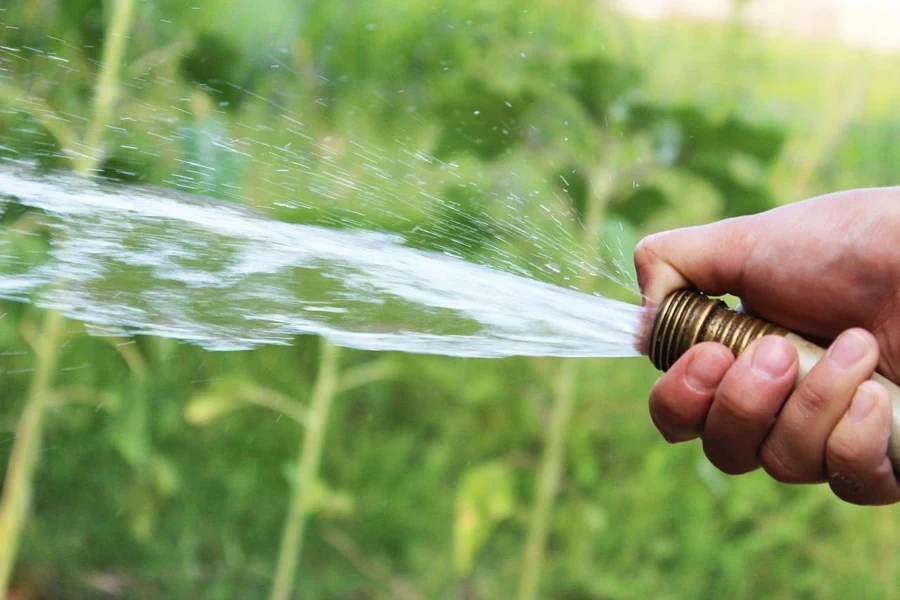Table of Contents
● Introduction
● Market overview
● Different types and their features
● Things to consider when selecting products
● Conclusion
Introduction

Using garden hoses and reels is important for keeping your garden in shape. They make watering easy and prevent tangles, ensuring they last long. The market for these products is growing to meet rising demand. It is driven by new developments in the market across different industries, such as construction and agriculture. It’s important to know about the various types available and what features they have in order to choose the right one. Some of the main factors to think about include how long the hose is, what it’s made of, how easy it is to use and move around, and if it drains well. This guide gives you a detailed look, at what’s happening in the market and what you should think about when picking out a quality garden hose and reel.
Market overview

Market scale and growth
The worldwide hose reel market was valued at $414.6 million in 2022. It is expected to climb to $614.41 million by 2032 at a compound annual growth rate of 4%. The growth is fueled by the rising need for effective irrigation systems and the integration of modern technologies in hose reel production processes. Also, the increasing need for top-notch hose reels due to strict safety regulations in different industries increases the demand.
Spring-powered hose reels dominate the market share in the agriculture sector due to their user nature and dependability. North America region leads in market expansion thanks to robust infrastructure projects and a heightened focus on research and development. There is a surge in demand for cutting-edge products that deliver improved efficiency and longevity. The market is seeing a rise in customized motor-driven and manual hose reels that cater to industry requirements, fueling further growth.
Different types and their features

Spring driven hose reels
Spring-operated hose reels are popular due to their practicality and user-friendliness. They feature a self-retracting mechanism powered by a spring that automatically rolls up the hose without requiring intervention. These reels have a steel or plastic casing to safeguard the hose and guarantee lasting performance. The tension of the spring can be customized to suit hoses of lengths typically between 25 to 150 feet. These spools work well for home and business use by avoiding tangled or twisted hoses and providing a neat storage option.
Motor driven hose reels
Motorized hose reels offer retraction and are ideal for demanding industrial tasks such as heavy-duty applications. These reels come with powered motors that enable smooth retraction functionality. Electric variants typically include a user push-button control feature for effortless operation, while hydraulic and pneumatic options are preferred in settings where electricity could be risky. Reels with motorized drives can manage hoses up to 500 feet long. They are sturdy materials, like durable steel, and are constructed to withstand tough industrial environments.
Manual hose reels
Hand-operated hose reels are budget-friendly and simple to use. Perfect for gardens and light-duty tasks. They involve winding and unwinding the hose with a hand crank and are usually made of lightweight materials like aluminum or plastic for easy handling and installation. Manual reels are built to accommodate hoses ranging from 25 to 100 feet long. Additional features, such as swivel brackets and built-in hose guides, are included to promote functionality and avoid kinking when operating the reels.
Specialized hose reels
Industrial hose reels are tailored for use in various industries. High-pressure hose reels are crucial in settings that deal with pressurized hoses and can endure pressures reaching 5000 PSI. Reels are commonly constructed from strengthened steel and have safety features like pressure relief valves and robust swivel joints. Static discharge hose reels serve to avert accumulation in dangerous zones by incorporating grounding cables and anti-spark design elements. To manage substances, chemical hose reels use noncorrosive stainless steel or coated aluminum materials. They come equipped with chemical-resistant seals and hoses for safety and effectiveness in their industries.
Things to consider when selecting products

Hose length and capacity
Details about the length and storage capacity of hoses are needed.
Choosing a hose reel that fits the size and width of your hose is important for functionality purposes. Hose reels usually indicate the length of hose they can hold, with capacities varying from 25 to 150 feet for home use and up to 500 feet for industrial needs. The diameter of the hose is also crucial as most reels are made for sizes like 5\/6 inches or 3\/a inches. Using a hose that’s longer or thicker than the recommended specification for a reel can cause operational issues and may damage both the hose and the reel.
Material and durability
The physical build of a hose reel plays a role in determining its longevity and adaptability to various settings. Those crafted from plastic material, usually using UV-stabilized polypropylene, exhibit resilience against rust and corrosion, making them perfect for everyday home use. However, in scenarios demanding robust performance, the metallic reels fashioned from powder-coated steel or anodized aluminum stand out for their strength and lasting durability. Steel reels are well known for their durability and ability to withstand impacts effectively; aluminum reels provide a lightweight and sturdy alternative with great resistance to corrosion issues. Metal reels of premium grade often come equipped with stainless steel components and brass fixtures that contribute to their enhanced strength and lasting performance.
Usability and ergonomics
Improving the user-friendliness and design of hose reels can greatly boost their efficiency. Automatic rewind systems. Spring mechanisms or electric motors often drive them. Make retracting hoses a breeze. Lessen the need for manual labor. When it comes to reels, features like gear-assisted cranks and ergonomic handles with rubber grips offer improved handling and comfort. Furthermore, swivel bases and hose guides ensure unwinding and retracting to prevent twists or snags. Reels with tension control give users the ability to adjust retraction speed. It is particularly handy for longer or heavier hoses.
Portability and storage
Users who often have to move their hose reel around. Put it away when not in use. Know how important portability and compact storage options are for convenience! Portable hose reels typically have wheels and a stable design for smooth mobility across rough surfaces. Foldable handles and a space-saving frame make it easy to store these reels in spots without any hassle. Certain models even come with built-in hose compartments. Covers to shield the hose from the elements and help it last longer.
Water drainage
It’s important to have water drainage systems in hose reels to avoid mold growth and hose damage caused by excess moisture buildup. Top-notch reels have perforated bases and side panels that promote water drainage and prevent pooling. Several designs include drip trays with channels that guide water away from the reel. In addition to this feature, some models have raised mounts or slotted hubs that facilitate air circulation and help keep the hose dry in humid or rainy weather conditions. These drainage elements help preserve the hose’s strength while also cutting down on tasks and prolonging the lifespan of the reel.
Conclusion

Selecting the appropriate garden hose and reel requires a thorough understanding of current market trends, the various types available, and the critical factors influencing their usability and durability. By making an informed choice, businesses can achieve efficient and hassle-free garden maintenance, optimizing their operations and ensuring long-term performance.




